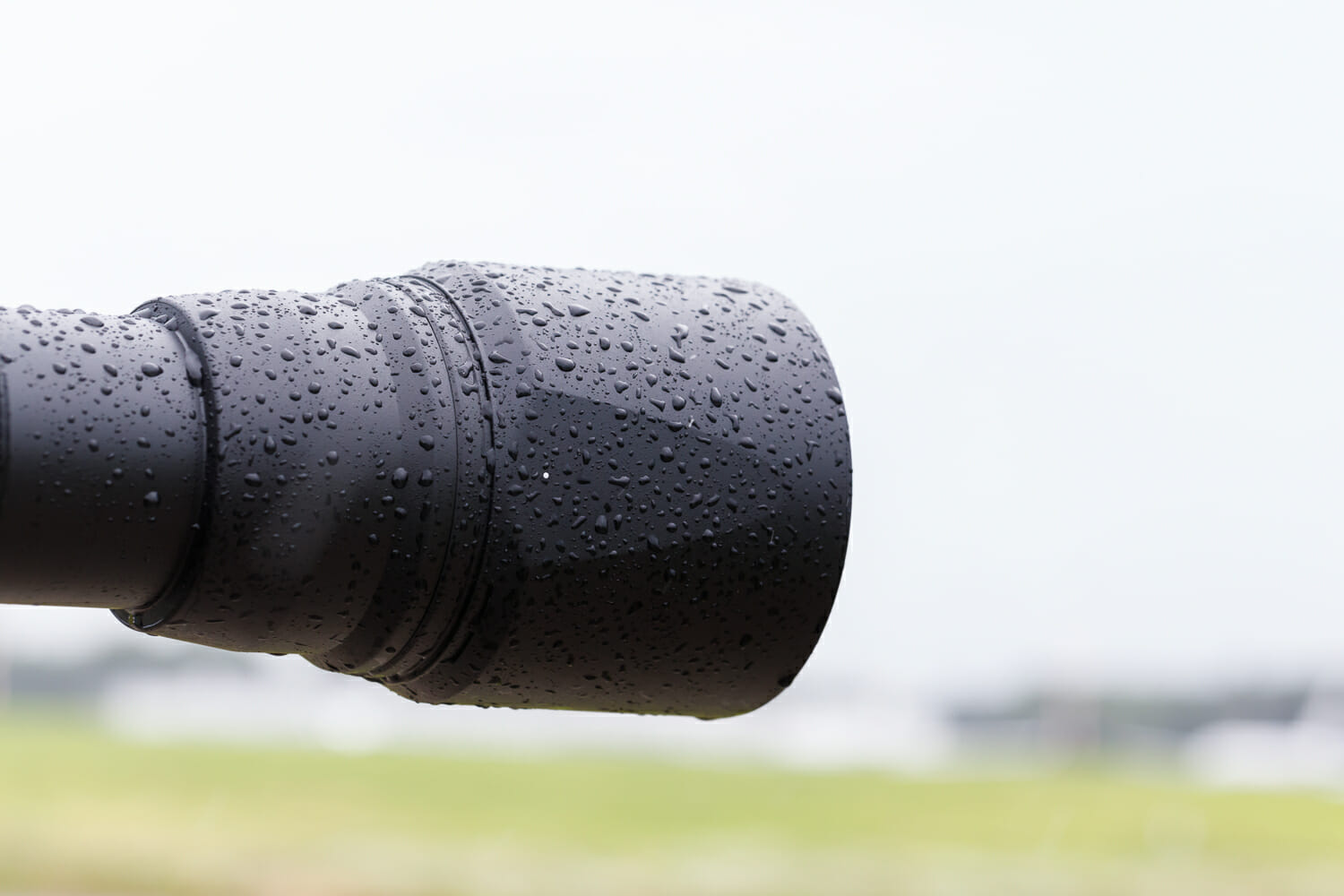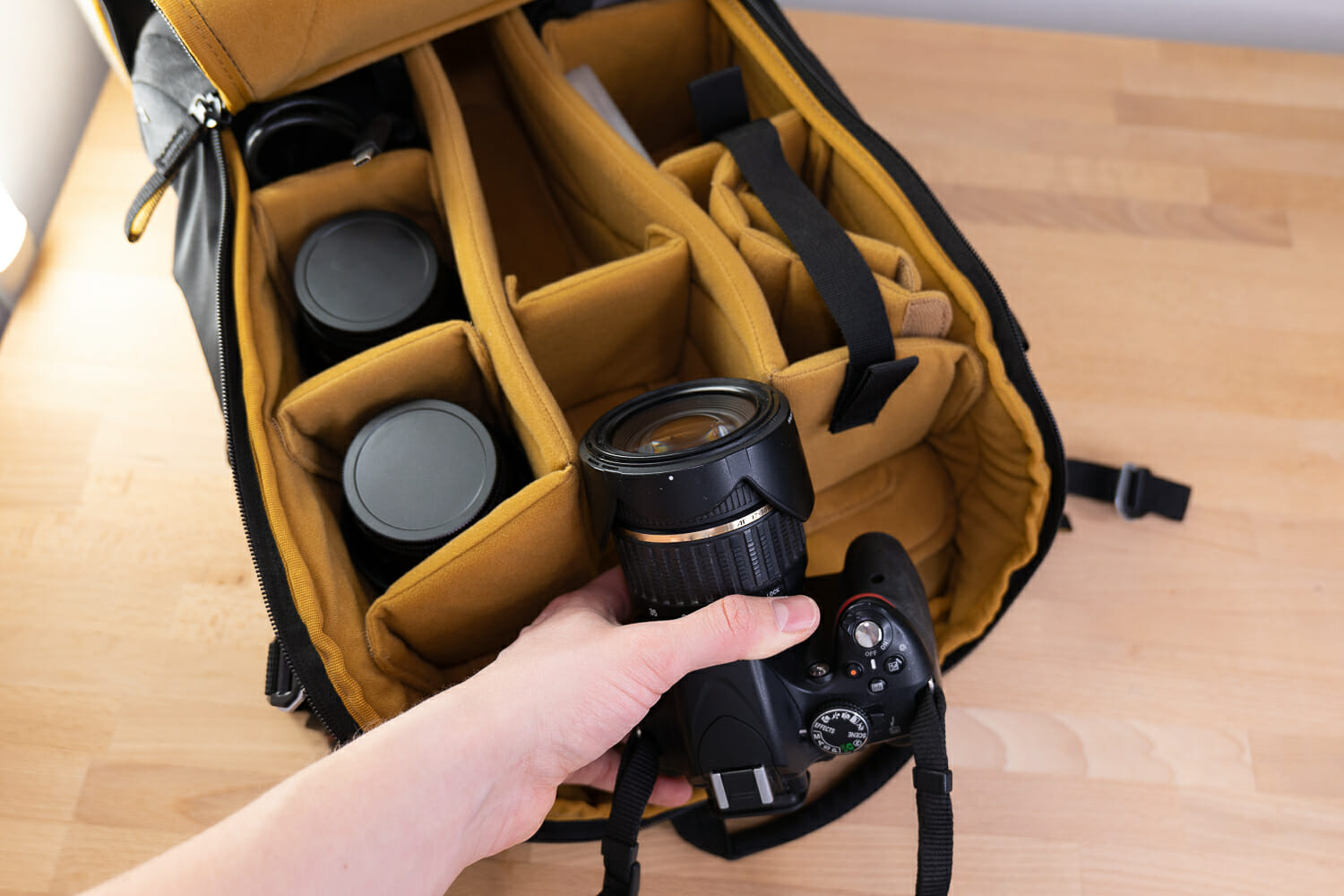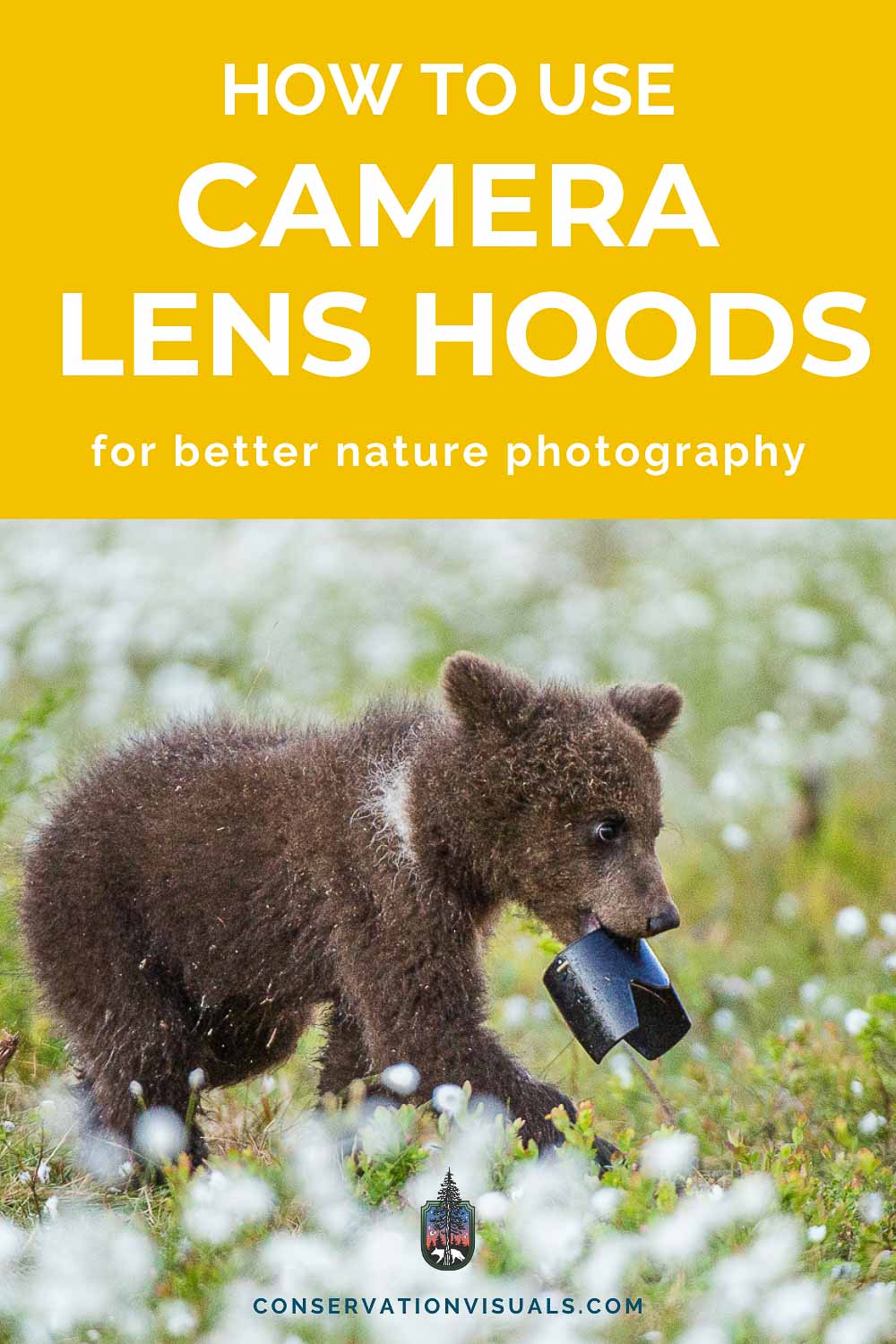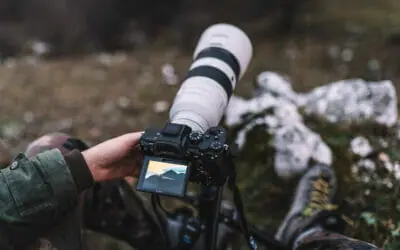Feature photo by Ph.artgraf/Shutterstock
But where to start? Like anything in photography, lens hoods can be overwhelming and confusing, with many size, shape, and function choices.
In this article, we'll break down what a lens hood is, why it's such an essential tool for your kit, when to use a lens hood (and when not to!), plus tips on how to select one that's right for your particular lens.
What is a camera lens hood?
Lens hoods (a.k.a. lens shades) block unwanted light from entering your lens, like a baseball cap shielding your eyes from the sun.
As we'll see later in this article, this can be incredibly helpful in improving image quality in various situations, from sunset photos in the mountains to dreamy backlit wildlife portraits, to nocturnal shoots in the city – all while protecting your camera from damage.
Photo: Greens and Blues/Shutterstock
Camera lens hoods come in different sizes and shapes depending on the lens they're being used with. Each is designed to work best with a certain type of lens.
Types of camera lens hoods
There are multiple types of lens hoods, each specifically shaped and designed for different focal lengths and purposes. The most common types are petal, cylindrical, and square.
Petal
Petal lens hoods are the most common type. This shorter hood has curved edges that strategically block out light without blocking the field of view. They're typically used with a wide-angle lens or cameras with a full-frame sensor.
Lens hoods are usually made of plastic or rubber, which makes them lightweight and easy to attach and remove from the lens. Some high-end lens hoods are made of metal or carbon fiber, which makes them more durable and better suited for rugged outdoor environments.
(Note: a petal hood is also called a tulip hood. When shopping around, you may see both terms used for the same style of hood.)
Cylindrical
Cylindrical lens hoods are the best at blocking out light completely. Unlike petal lens hoods that have a flower petal shape, cylindrical lens hoods have a straight, cylindrical shape. The design of the cylindrical lens hood is simple and effective, allowing it to block extra light that can cause lens flare and image degradation.
You'll typically use a cylindrical lens hood with zoom lenses and prime lenses, which have a tighter field of view. Usually, a zoom or telephoto lens comes with a lens hood specific to its focal length. But if you lose it or need a replacement, you'll want to make sure you purchase the correct size.
There is such a thing as the wrong lens hood for your lens, and an incorrectly sized lens hood can result in vignetting or other issues with your images.
Square
Square lens hoods are named after their square or rectangular shape and are commonly used with certain types of lenses, like wide-angle lenses. Although not as common as other styles, square or rectangular lens hoods effectively block light without causing vignetting on ultra-wide angles since their shape resembles that of the photo's frame.
A square lens hood is useful for macro photography as it allows for good coverage of the image area without being visible in the frame. Shooting macro often requires getting close to a subject and manipulating the camera angle to capture the details, which is impossible with a bulkier lens hood. So, the more compact size is handy when photographing small objects or details.
Photo: Ggia/CreativeCommons 3.0
Camera lens hoods block unwanted light from entering the lens, which prevents lens flare. This helps improve quality, including the contrast and color richness of an image.
Benefits of using a camera lens hood
It blocks out stray light
The primary benefit of a lens hood is blocking unwanted ambient light to avoid lens flare. Stray light coming from an angle can cause reflections inside the lens.
This light bounces around inside the lens before finding its way onto your camera's sensor, which produces lens flare and potentially ghosting. All of this decreases image quality.
A lens hood will prevent unwanted light from getting in, so you get cleaner photos.
It increases contrast and deepens colors in your photos
A lens hood can help increase contrast and deepen colors in a photo by reducing lens flare and unwanted light entering the lens. When light enters a lens from the sides, it can bounce and scatter inside the lens, causing a reduction in contrast and saturation in the image. That washed-out look is challenging to fix in post-processing.
A lens hood helps reduce this scattered light by blocking out light from the sides, resulting in a cleaner image with more vibrant color and contrast. In addition, by reducing the effect of lens flare, the lens hood helps colors appear more vibrant and true to life.
It protects your lens from scratches
A lens hood can protect your front lens element from scratches, accidental impacts, rain, or snow. Without a hood, the front glass element of your lens is exposed to rough weather, oily fingers, or any obstacle you might bump into when getting from one location to the next.
It saves you money in the long run
In the unfortunate scenario of dropping a lens (don't worry… it happens to all of us!), your lens hood can be your saving grace.
Because of their position at the front of the lens, the hood will often absorb most of the impact.
Replacing a broken hood is much cheaper than rescuing a cracked lens.
Photo: Pheelings media/Shutterstock
Luckily, a camera lens hood is just about the easiest accessory to use with your camera! Simply twist it onto the front of your lens.
How to use a lens hood
Ensure that the hood is facing outwards (protruding away from the camera) because otherwise, it can't fulfill its function!
Older metal hoods might not have this clicking mechanism. For those, simply screw the hood onto the front of the lens until it is securely attached.
Photo: fantom_rd/Shutterstock
A lens hood is highly useful in a wide variety of situations. That's why most photographers will keep a lens hood on most of the time.
When should I use a lens hood?
Many photographers (myself included) recommend using a lens hood all of the time since they are handy in almost any situation. So by default, keep a hood on your lens.
Namely, you want to use a lens hood when:
Shooting in bright sunlight or near strong sources of light
If you're shooting in an environment with strong off-camera light sources, such as the sun or external flash, having a lens hood on is crucial to eliminating flares and keeping your photos crisp.
You have a backlit subject
Having the sun behind your subject exposes your lens to a lot of stray light. A lens hood can help you keep your subject's contrast while still gaining that backlit glow.
Photo: Mikhail Starodubov/Shutterstock
Beyond blocking unwanted light, lens hoods also help prevent unwanted dust and water droplets from landing on your lens and ruining your shots.
Shooting in rugged locations with dust or mist
A lens hood can prevent the front of your lens from being marred by water droplets or dirt that may interfere with your photos.
During night photography
It may seem counterintuitive, but keeping your lens hood on at night is especially important. Light sources (like car headlights, street lamps, etc.) are powerful when it's dark. Therefore, flares from these sources can thoroughly wash out a photo and render it unusable.
You don't have time to put on a lens cap
You can keep a lens clean with a lens cap or wiping it down with a cloth. But in certain situations, this is too time-consuming and cumbersome. Rather than miss the moment because you're fumbling around with a lens cap, keep your hood on to focus on the action during a fast-paced shoot while still minimizing dust or water.
When should I not use a lens hood?
It's handy to keep a lens hood on most times, but there are unique cases when it doesn't make sense to use one. For instance:
When you want a lens flare effect in your photo
Lens flares can add a special artistic touch to a photo. Taking off your lens hood can help you achieve this effect since it allows bright light to enter the front of your lens at an angle. This light then scatters within the lens – creating flares.
Photo: Roman Rvachov/Shutterstock
Sometimes you want lens flare as an artistic element in your photos. When that's the case, simply remove the lens hood and unleash your creativity.
When the lens hood shows up in your photo
Sometimes a lens hood will sneak in the corners of your images, which may happen when using an ultra-wide lens or ill-fitting hood.
When using built-in flash
Lens hoods, especially longer ones, can cast a shadow on the bottom part of your image when you use your camera's built-in flash. However, you can avoid this problem by using an external flash, either off your camera (using a remote trigger) or with a flash bracket (an accessory that lifts your flash while keeping it connected to the camera).
When you're using a lens accessory like a filter kit
Any large accessory that attaches to the front of your lens, such as filter kits for landscape photography, requires you to remove the lens hood before the accessory can be attached. (That said, some accessories like polarization filters can be attached at the same time as a lens hood.)
When it's windy
Because they protrude off your lens, lens hoods can catch the wind like a sail, resulting in shaky images (or worse, cause your tripod to topple over, breaking the lens off the camera and allowing rain to pour right on into the body of the camera, ruining it instantly and forever. This may or may not have happened to me… 😬).
This issue is particularly problematic with telephoto lenses with long cylindrical hoods, which are less aerodynamic, or when your tripod is set up in a precarious spot. So when in harsh weather conditions, remove your hood to prevent any accidents!
When you're focused on macro photography
Although it's possible to use a short square hood when doing macro photography, sometimes the focusing distance is so narrow that any hood will get in the way.
Removing the hood is also helpful in low-light situations, often encountered when shooting small subjects in the undergrowth.
Photo: Sergey Uryadnikov/Shutterstock
Nature photographers know that you want to keep careful track of all your doodads while in the field, because you never know who'll find and keep what you leave behind. If you decide to ditch your lens hood, make sure it's carefully stowed in your camera bag!
Choosing the right camera lens hood
It's rare you'll ever need to shop for a lens hood. New and refurbished lenses typically come with the appropriate lens hood.
Always use the lens hood that came with your lens when you purchased it, as this will be the best fit.
But, if you find a used lens you love in a shop or score a great find at a garage sale, you'll probably need to find the correct lens hood for it.
Lens hoods are not one-size-fits-all kind of tool. Choosing a lens hood hinges on balancing light blocking and keeping the hood from showing up in the image. So, consider the following three factors:
Focal length – wider lenses need shorter hoods, whereas telephoto lenses are often better with longer ones.
Image sensor size – does your camera have a full-frame or crop sensor? Knowing this will also help you determine how long or short your hood should be. For example, crop sensors have a smaller field of view and can use a longer hood.
Size of the lens' front element – knowing the circumference of your lens will help you find a hood that fits. Most lenses will have a label at the front indicating this value (i.e., 62mm)
As a starting point, you can do a quick Google search for your particular lens. Searching for your lens or calling your manufacturer is the best place to begin since lens hoods are designed to fit specific lenses.
However, if your lens does not have a particular compatible hood, use the three factors above (focal length, sensor size, and front element size) to guide your search.
You can also visit a local camera store to consult a knowledgeable professional and test things out in person.
Photo: Artyom Lezhnyuk/Shutterstock
The easiest and most space-savvy way to store your lens hood is to simply screw it onto your lens backwards. You won't lose track of it and it provides a little extra protection for your lens.
How to store your camera lens hood
However, if the hood is too bulky to fit in your camera bag, you can remove it altogether. Just remember to reattach the next time you pull out your camera!






















